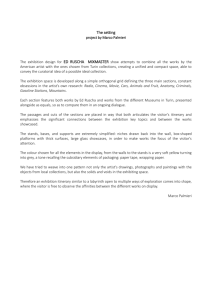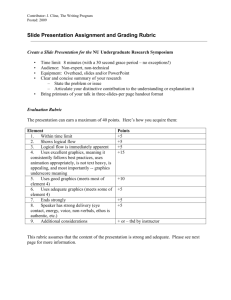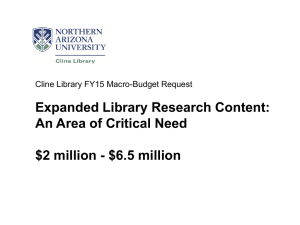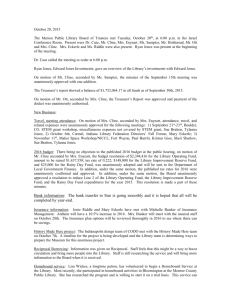CD Press Release - Cryptogramophone | Extranet
advertisement
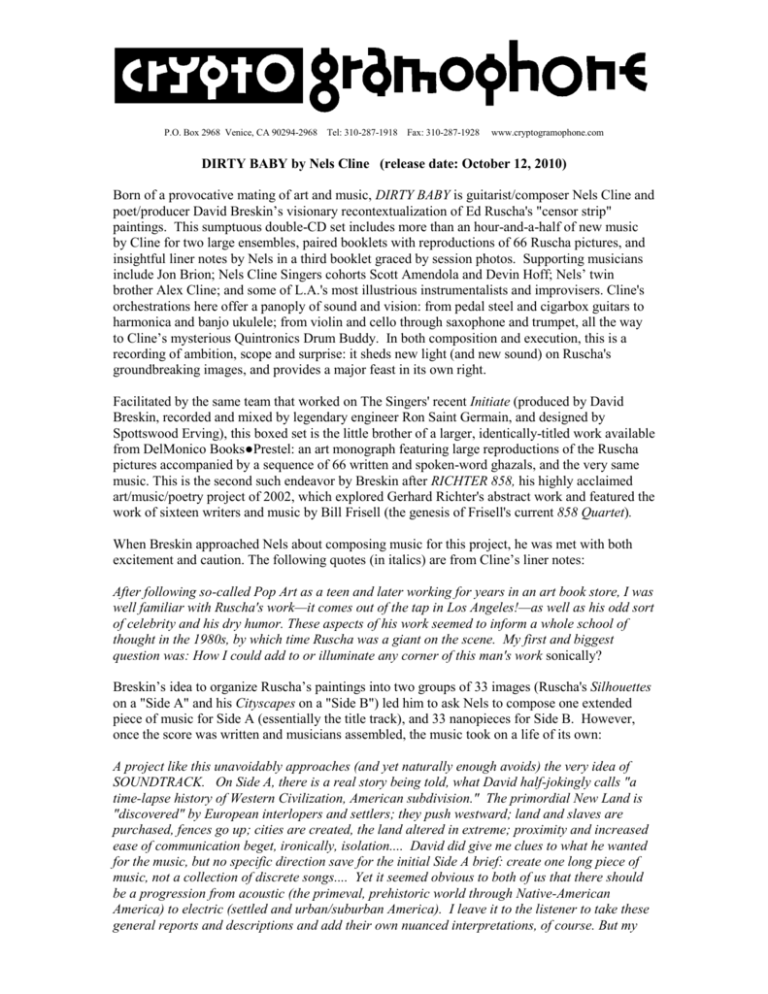
P.O. Box 2968 Venice, CA 90294-2968 Tel: 310-287-1918 Fax: 310-287-1928 www.cryptogramophone.com DIRTY BABY by Nels Cline (release date: October 12, 2010) Born of a provocative mating of art and music, DIRTY BABY is guitarist/composer Nels Cline and poet/producer David Breskin’s visionary recontextualization of Ed Ruscha's "censor strip" paintings. This sumptuous double-CD set includes more than an hour-and-a-half of new music by Cline for two large ensembles, paired booklets with reproductions of 66 Ruscha pictures, and insightful liner notes by Nels in a third booklet graced by session photos. Supporting musicians include Jon Brion; Nels Cline Singers cohorts Scott Amendola and Devin Hoff; Nels’ twin brother Alex Cline; and some of L.A.'s most illustrious instrumentalists and improvisers. Cline's orchestrations here offer a panoply of sound and vision: from pedal steel and cigarbox guitars to harmonica and banjo ukulele; from violin and cello through saxophone and trumpet, all the way to Cline’s mysterious Quintronics Drum Buddy. In both composition and execution, this is a recording of ambition, scope and surprise: it sheds new light (and new sound) on Ruscha's groundbreaking images, and provides a major feast in its own right. Facilitated by the same team that worked on The Singers' recent Initiate (produced by David Breskin, recorded and mixed by legendary engineer Ron Saint Germain, and designed by Spottswood Erving), this boxed set is the little brother of a larger, identically-titled work available from DelMonico Books●Prestel: an art monograph featuring large reproductions of the Ruscha pictures accompanied by a sequence of 66 written and spoken-word ghazals, and the very same music. This is the second such endeavor by Breskin after RICHTER 858, his highly acclaimed art/music/poetry project of 2002, which explored Gerhard Richter's abstract work and featured the work of sixteen writers and music by Bill Frisell (the genesis of Frisell's current 858 Quartet). When Breskin approached Nels about composing music for this project, he was met with both excitement and caution. The following quotes (in italics) are from Cline’s liner notes: After following so-called Pop Art as a teen and later working for years in an art book store, I was well familiar with Ruscha's work—it comes out of the tap in Los Angeles!—as well as his odd sort of celebrity and his dry humor. These aspects of his work seemed to inform a whole school of thought in the 1980s, by which time Ruscha was a giant on the scene. My first and biggest question was: How I could add to or illuminate any corner of this man's work sonically? Breskin’s idea to organize Ruscha’s paintings into two groups of 33 images (Ruscha's Silhouettes on a "Side A" and his Cityscapes on a "Side B") led him to ask Nels to compose one extended piece of music for Side A (essentially the title track), and 33 nanopieces for Side B. However, once the score was written and musicians assembled, the music took on a life of its own: A project like this unavoidably approaches (and yet naturally enough avoids) the very idea of SOUNDTRACK. On Side A, there is a real story being told, what David half-jokingly calls "a time-lapse history of Western Civilization, American subdivision." The primordial New Land is "discovered" by European interlopers and settlers; they push westward; land and slaves are purchased, fences go up; cities are created, the land altered in extreme; proximity and increased ease of communication beget, ironically, isolation.... David did give me clues to what he wanted for the music, but no specific direction save for the initial Side A brief: create one long piece of music, not a collection of discrete songs.... Yet it seemed obvious to both of us that there should be a progression from acoustic (the primeval, prehistoric world through Native-American America) to electric (settled and urban/suburban America). I leave it to the listener to take these general reports and descriptions and add their own nuanced interpretations, of course. But my P.O. Box 2968 Venice, CA 90294-2968 Tel: 310-287-1918 Fax: 310-287-1928 www.cryptogramophone.com choices of harmonica, pedal steel guitar, and Hammond organ were all intended to reflect a sort of Americana, while the music and choice of musicians could at any moment transcend and/or subvert this notion should it become facile or rigid. The 33 Side B Cityscapes would tell a different kind of story, and would demand a different set of musical responses. Here, each short piece of music seeks a 1:1 relationship with its paired Ruscha picture, and each share the same title. The violent or otherwise threatening language of these paintings' titles became the generative force behind the music, and created the narrative framework and dramatic arc of Side B: These Cityscapes are not representational cityscapes and are (perhaps) the most abstract work of Ruscha's fifty-year oeuvre. There are no images, save for the censor strips themselves—created in acrylic or oil, or less conventionally, by removing pigment with bleach. As with all the censor strip work, language is emphasized even as it is obscured. In the various threats, taunts, commands, pleas and loaded queries which grace these pictures, David found his trigger: he would go back to the "Cradle of Civilization" to explore the U.S. presence in Iraq (most particularly), with some expansion/bleeding into other areas, as Imperialism tends to. In preparation, we discussed classic film noir scores, jazz scores, "event" music, and the fact that Heavy Metal was being used by American troops to torture Muslim prisoners. Given all this, a sort of pastiche approach, pioneered by composers like John Zorn, seemed natural and right. I also drew on my experiences playing with and/or listening to artists who had rethought structure/improvisation: Wadada Leo Smith, Vinny Golia, Air (not the French guys), the Art Ensemble of Chicago, Anthony Braxton, the ROVA Saxophone Quartet. So Side B is a total mash-up of free jazz, hard rock, grindcore, Morton Feldman-esque swaths of indeterminancy, blues, Ellington/Evans references, spy music, and more—all to create tension between these sensibilities, to highlight differences, to punctuate conflict. Finally, the musicians on this album were chosen by Cline because of his personal history with them, and their ability to negotiate scores combining composed and improvised music. In alpha order, they assume pride of place as follows: Scott Amendola: drum set, percussion, loops/electronics Bill Barrett: chromatic harmonica Jon Brion: electric piano, EMS synthi, voice Jessica Catron: cello Alex Cline: percussion Dan Clucas: trumpets, flutes Jeremy Drake: electric & acoustic guitars, banjo ukulele Brad Dutz: vibraphone, xylophones, frame drum, bongos Danny Frankel: percussion, 1/2 drum set Jeff Gauthier: violin Vinny Golia: flutes, clarinets, saxophones Devin Hoff: contrabass, bass guitar, cigarbox guitar Wayne Peet: organ Glenn Taylor: pedal steel guitar Nels Cline: electric & acoustic guitars, lap steel, megamouth, cigarbox guitar, effects, Quintronics Drum Buddy Contact: Matt Merewitz – Fully Altered Media (347) 527-2527 matt@fullyaltered.com


